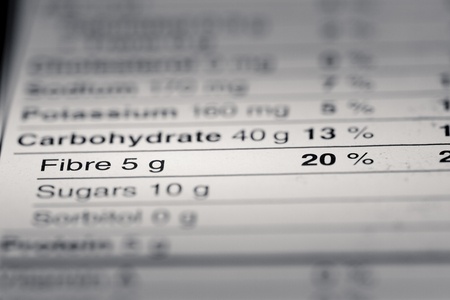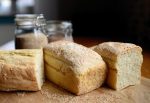
Dietary fibre has had strong associations with heart health but consumption also helps in weight loss and management. Fibre is the edible, non-starch portion of plant foods and comprises cellulose, pectin, β-glucans, gums, mucilage and algal polysaccharides. Our sources are whole grains, fruit and vegetables, legumes and nuts.
The overall picture is a recommendation to have 20 to 35g of fibre per day but at the time there was no evidence to suggest any benefits between soluble and insoluble fibres. Likewise, there was no evidence supporting high-fibre foods over any supplements although investigations are on-going. There are certainly more studies assessing fibre’s effect on how full we feel (satiation or satiety) and these are more likely to show a benefit when compared to those studies investigating weight loss. These other studies are also limited by potential confounding factors such as small sample size – a common issue, incomplete randomisation in the study, relatively short wash out periods and poor compliance (Pereira and Ludwig, 2001). There are plausible mechanisms but just insufficient long-term study data to support such claims.
What are those potential mechanisms for enhancing satiation ?
(1) It might be energy dilution. A proportion of fibre is fermented which reduces the overall energy or calorific value of a product or meal containing the fibre, for any given weight of food. The high fibre foods ted to be less energy dense for a given weight or volume (Howarth et al., 2001).
(2) Chewing and gastric distension are both triggers for feelings of fullness. Increasing the extent of chewing, the chewy nature of food, and the viscosity caused by adding fibre is said to trigger the signals for fullness (Howarth et al., 2001).
(3) A food needs to be palatable, having good sensory or organoleptic acceptance and it’s a key driver for food consumption versus over consumption. When it comes to taste, products with high levels of fibre are usually rated lower in terms of their palatability (Pereira and Ludwig, 2001).
What are those potential mechanisms for enhancing satiety ?
(1) Gastric Emptying & Nutrient Absorption: Soluble fibres are thought to increase intraluminal viscosity in the stomach. This results in slower gastric emptying, increased transit time and prolonged absorption of nutrients, especially carbohydrate and fat (Freeman, 2000). It may impact on the level of some key hormones post-consumption such as reduced insulin levels (Pereira & Ludwig, 2001) and prolonged increases in cholecystokinin (CCK) levels (Bourden et al, 1999). Further the changes in the insulin levels may alter metabolic fuel partitioning in favour of fat oxidation (Pereira & Ludwig, 2001). Greater weight loss tends to be observed in longer term trials averaging 3 to 6 months where high fibre (1.9kg) content is compared with low fat diets (1.0kg) and better still when both are combined (3.4kg) however there is limited data (Roberts et al, 2002) on this effect. Overall these may impact satiety and thus weight maintenance.
(2) Fermentable fibre: Some fibres are fermented by the bacteria in the colon producing short chain fatty acids (SCFA). Pieces of evidence suggest that these result in an increase in the production of other gut hormones such as glucagon-like protein (GLP-1) which, in theory, could affect satiety (Roberts et al, 2002, Pereira & Ludwig, 2001).As studies progress, particularly long-term, better managed studies become available for perusal, it’s evident that there is a story to tell for dietary fibre in health. In time, this post will be extended to include those studies and present a more concrete picture of how effective fibre is in weight management.
References
Bourdon, I., Yokoyama, W., Davis, P., Hudson, C., Backus, R., Richter, D., … & Schneeman, B. O. (1999). Postprandial lipid, glucose, insulin, and cholecystokinin responses in men fed barley pasta enriched with β-glucan. Amer. J. Clinical Nutr, 69(1), pp. 55-63.
Howarth, N. C., Saltzman, E., Roberts, S. B. (2001). Dietary fiber and weight regulation. Nutrition reviews, 59(5), pp. 129-139.
Pereira, M. A., & Ludwig, D. S. (2001). Dietary fiber and body-weight regulation: observations and mechanisms. Pediatric Clinics of North America, 48(4), pp. 969-980.
Roberts, S. B., McCrory, M. A., & Saltzman, E. (2002). The influence of dietary composition on energy intake and body weight. J Amer. Coll. Nutr, 21(2), pp. 140S-145S.

Would you update this post as there is a lot more evidence now. I enjoy some of your articles very much so show us a bit more. !
I read this with some interest. There are so many products out there which make claims for dietary fiber that I think it must solve everything. Will be hoping you write more on the subject.